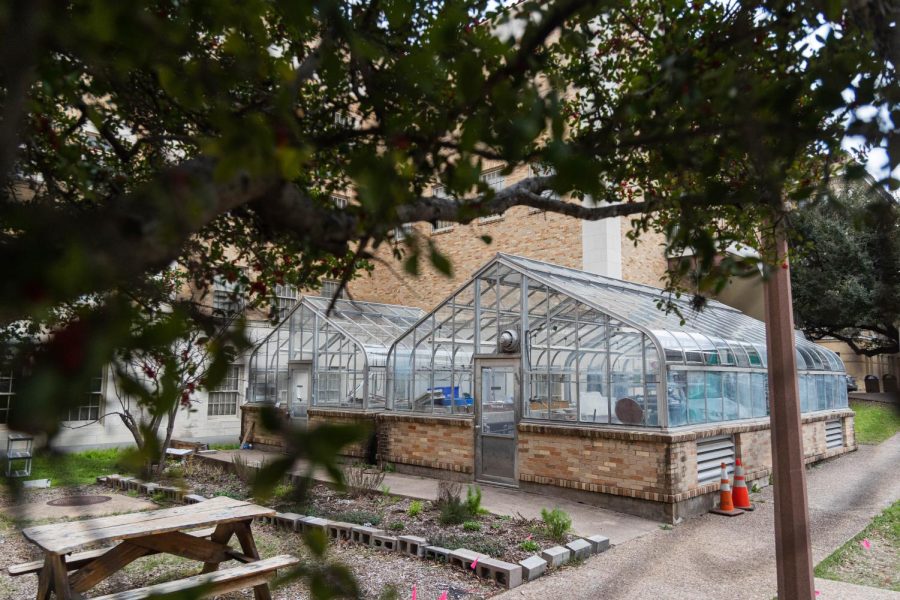After years of abandonment, Painter Greenhouse will receive new life
February 14, 2023
UT Aquaponics, a project under Engineers for a Sustainable World, began cleaning out the newly restored UT greenhouses last Monday.
The adjacent greenhouses are located near the Turtle Pond and Painter Hall. Last year, the project received a grant of $39,234 from the Green Fund to repair the greenhouse space from years of hail and ice storm damage.
After taking inventory, the next step will be building prototypes for aquaponics systems using the new greenhouse resources, said Lan Nguyen, the project team lead for UT Aquaponics.
Environmental engineering junior Nguyen said the project is a fully student-led initiative that uses DIY resources and research to engineer sustainable systems, creating a unique opportunity to learn about the design process from theoretical conception to actual implementation.
“We don’t know what kind of problems we’ll face if things go wrong, but that’s part of the process,” Nguyen said.
Aquaponics is an environmentally efficient form of closed-loop agriculture that grows plants from fish waste nutrients, said Sophia Doss, the research team lead for UT Aquaponics and an environmental engineering sophomore. UT Aquaponics is currently working on a mobile cart system to be stored inside the greenhouse, she said.
Jill Parrish, the coordinator of Green Fund, said she hired contract workers to repair the greenhouse and install shatter-proof glass last December. Previously owned by the College of Natural Sciences, Parrish said the Painter greenhouses are now collaboratively owned by the Office of Sustainability for student use.
Parrish said future plans include partnerships with other organizations such as Beevo Beekeeping to cultivate a pollinator garden. They are hoping to grow pollinator plants in the greenhouse to eventually plant around campus to increase local biodiversity, she said.
“It provides an opportunity to use the University as a living laboratory so students can be here on campus and conduct experiments,” Parrish said. “To apply the knowledge that they’re gaining in their academic courses in a real-world environment.”
Nguyen said her current goal in constructing the system is mainly educational and is a way to apply environmental engineering knowledge to a hands-on project.
“As college students, we have a lot of pressure and stress associated with learning,” Nguyen said. “(UT Aquaponics) is a place and a topic that people choose to come to because it’s something they want to learn about and be a part of.”












